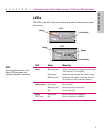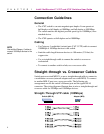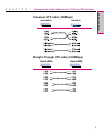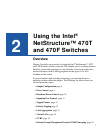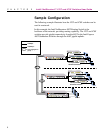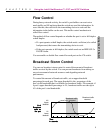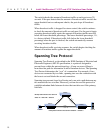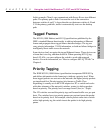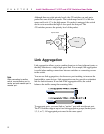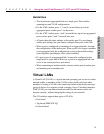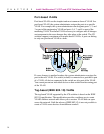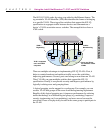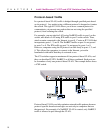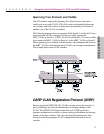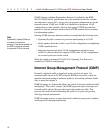
11
Using the Intel
®
NetStructure™ 470T and 470F Switches
CHAPTER 2
Using the 470 Switch
In this example, Client A can communicate with Server B over two different
paths. The primary path is Path 1 because the cost of the connection
between switches A and C is lower than the cost between switches A, B and
C. If the primary path fails, traffic is automatically sent over the backup
path.
Tagged Frames
The 802.1D (1998 Edition) and 802.1Q specifications published by the
IEEE extended Ethernet functionality to add tag information to Ethernet
frames and propagate these tagged frames between bridges. The tag can
carry priority information, VLAN information, or both and allows bridges to
intelligently direct traffic across the network.
Some devices don’t recognize the tagged Ethernet frames. These devices see
a frame that is too big, and then discard it. When operating 802.1Q (tag-
based) VLANs, you can configure the switch to work with untagged
devices. For more information, see “How to configure 802.1Q VLANs” in
Chapter 5.
Priority Tagging
The IEEE 802.1D (1998 Edition) specification incorporates IEEE 802.1p
and defines information in the frame tag to indicate a priority level. When
these tagged packets are sent out on the network, the higher priority packets
are transferred first. Priority tagging (also known as Traffic Class
Expediting) is usually set on the LAN adapter in a PC or switch and works
with other elements of the network (switches, routers) to deliver packets
based on priority. The priority level can range from 0 (low) to 7 (high).
The 470 switches can read the priority tags and forward traffic on a per port
basis. The switches have two priority queues per port and queue the packet
based on its priority level. For example, when a packet comes into a switch
with a high-priority tag, the switch inserts the packet in its high-priority
queue.



